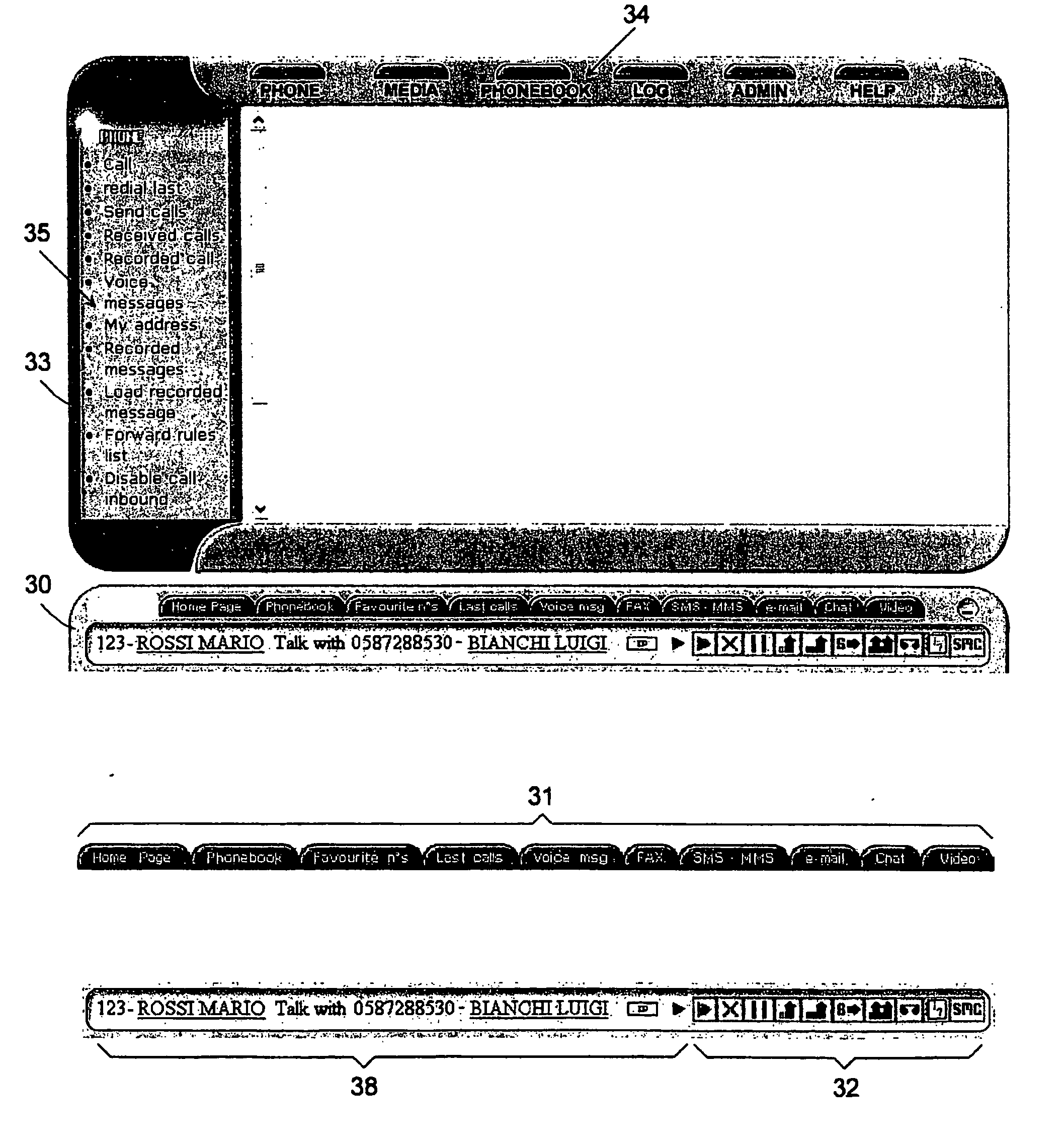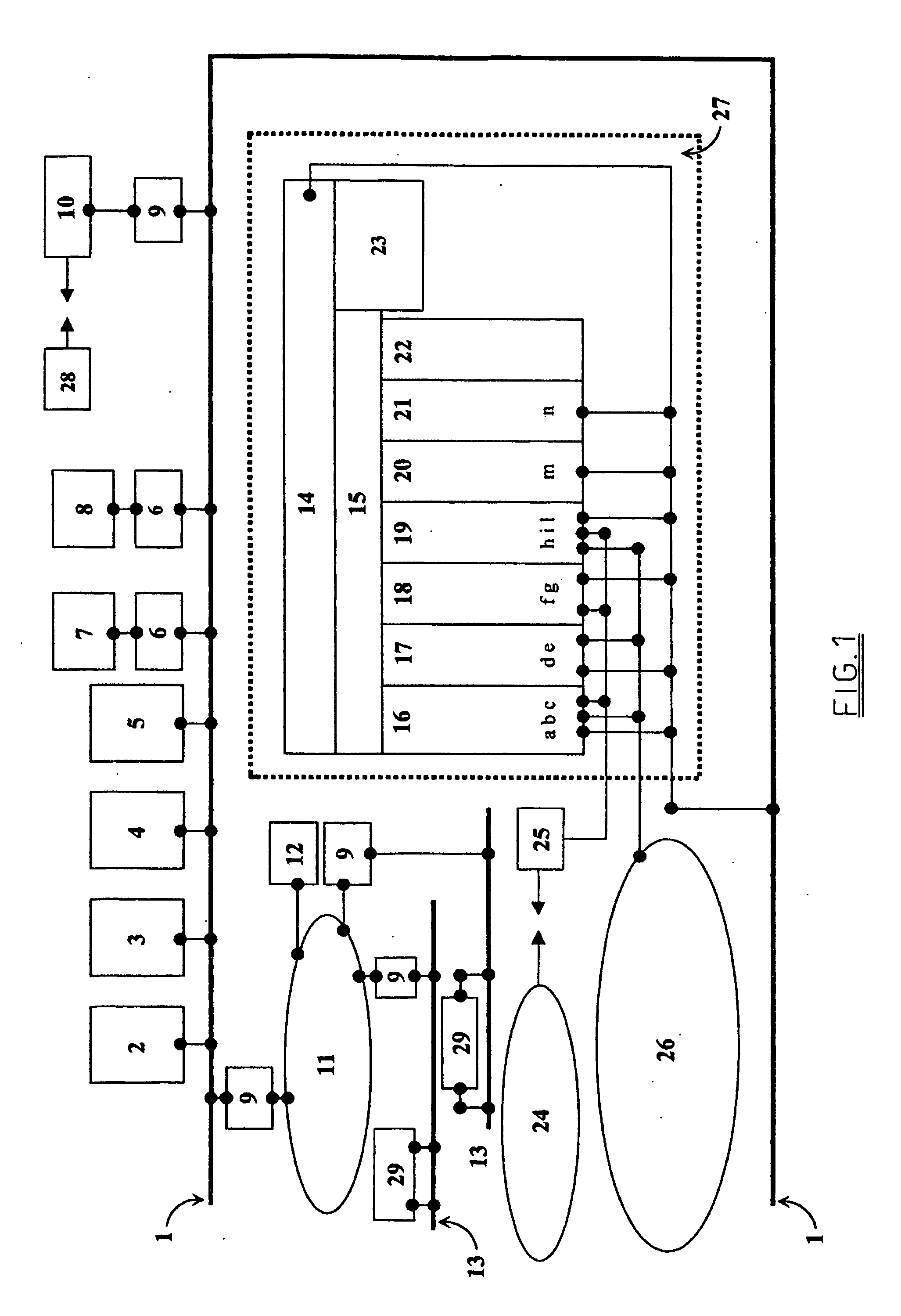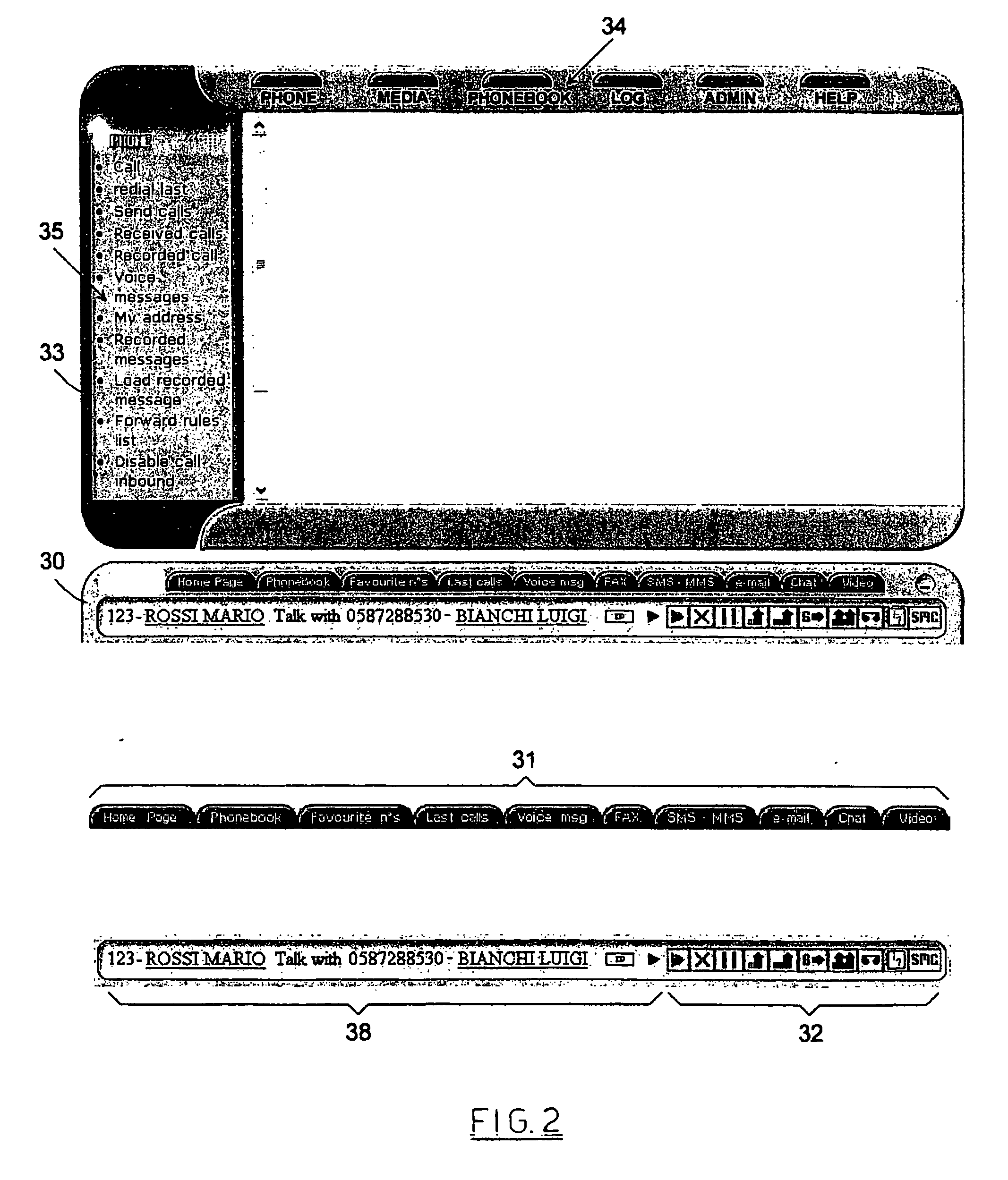Method and Apparatus for Unified Management of Different Type of Communications Over Lan, Wan and Internet Networks, Using A Web Browser
- Summary
- Abstract
- Description
- Claims
- Application Information
AI Technical Summary
Benefits of technology
Problems solved by technology
Method used
Image
Examples
Embodiment Construction
[0050] Referring now to FIG. 1, an apparatus (27) according to the invention, for the management of all types of communications, is connected to a LAN (1) that, in turn, is locally or remotely connected to the Communications Devices and Terminals, as well as other equipments, as indicated in the legend at the end of this description.
[0051] The LAN (1), to which the apparatus of the invention is connected, is linked, through the Internet (11), to other Local Area Networks (13) to which other devices and terminals (29) may be connected. Devices (12) fitted with headphones, microphones and web cameras as well as other Communications Devices and / or Terminals may be also individually connected to the Internet network (11).
[0052] The communications management apparatus (27) is connected to mobile telecommunications networks such as GSM, UMTS, etc. (24) through corresponding mobile Communications Devices or Terminals (25). The apparatus (27) is also connected to fixed telecommunications ...
PUM
 Login to View More
Login to View More Abstract
Description
Claims
Application Information
 Login to View More
Login to View More - R&D
- Intellectual Property
- Life Sciences
- Materials
- Tech Scout
- Unparalleled Data Quality
- Higher Quality Content
- 60% Fewer Hallucinations
Browse by: Latest US Patents, China's latest patents, Technical Efficacy Thesaurus, Application Domain, Technology Topic, Popular Technical Reports.
© 2025 PatSnap. All rights reserved.Legal|Privacy policy|Modern Slavery Act Transparency Statement|Sitemap|About US| Contact US: help@patsnap.com



